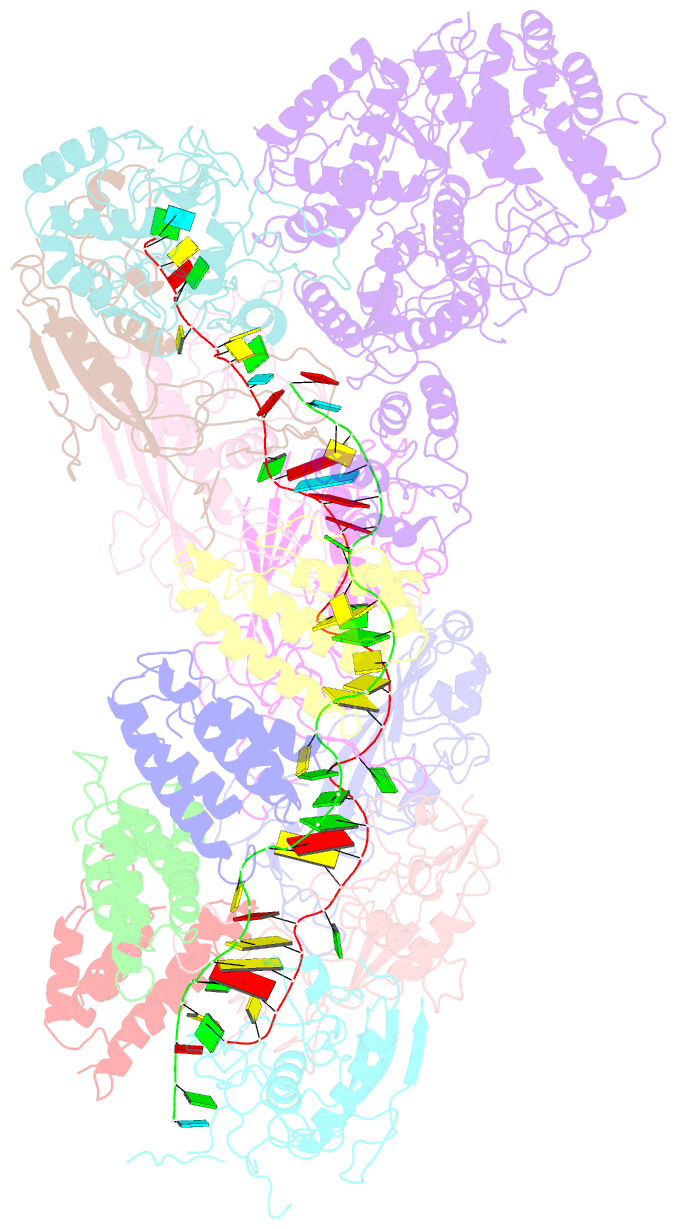Summary information and primary citation
- PDB-id
- 6o1o; SNAP-derived features in text and JSON formats;
DNAproDB
- Class
- RNA binding protein-RNA
- Method
- cryo-EM (3.8 Å)
- Summary
- cryo-EM structure of the t. thermophilus csm complex bound to target ssrna
- Reference
- Liu TY, Liu JJ, Aditham AJ, Nogales E, Doudna JA (2019): "Target preference of Type III-A CRISPR-Cas complexes at the transcription bubble." Nat Commun, 10, 3001. doi: 10.1038/s41467-019-10780-2.
- Abstract
- Type III-A CRISPR-Cas systems are prokaryotic RNA-guided adaptive immune systems that use a protein-RNA complex, Csm, for transcription-dependent immunity against foreign DNA. Csm can cleave RNA and single-stranded DNA (ssDNA), but whether it targets one or both nucleic acids during transcription elongation is unknown. Here, we show that binding of a Thermus thermophilus (T. thermophilus) Csm (TthCsm) to a nascent transcript in a transcription elongation complex (TEC) promotes tethering but not direct contact of TthCsm with RNA polymerase (RNAP). Biochemical experiments show that both TthCsm and Staphylococcus epidermidis (S. epidermidis) Csm (SepCsm) cleave RNA transcripts, but not ssDNA, at the transcription bubble. Taken together, these results suggest that Type III systems primarily target transcripts, instead of unwound ssDNA in TECs, for immunity against double-stranded DNA (dsDNA) phages and plasmids. This reveals similarities between Csm and eukaryotic RNA interference, which also uses RNA-guided RNA targeting to silence actively transcribed genes.





